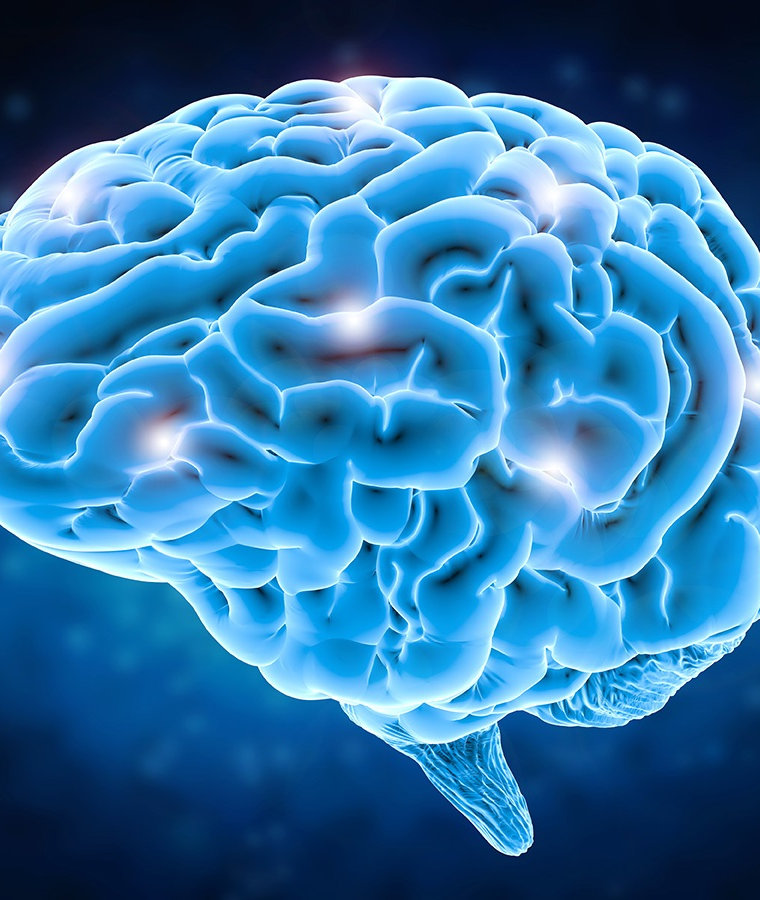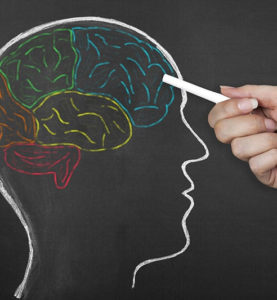According to neuroscience, what you think about, and feel on a body sense level, leaves an imprint on the brain!
 Brainspotting is similar to EMDR but different , it works amazingly to heal your brain from trauma and release trapped emotions in your body, it’s easy,simple and effective!)
Brainspotting is similar to EMDR but different , it works amazingly to heal your brain from trauma and release trapped emotions in your body, it’s easy,simple and effective!)
Brainspotting Empowers your Mind to do the Necessary Healing! Brainspotting is a powerful, advanced form of trauma therapy that can access parts of the brain that are hidden from one’s awareness.
Where you look affects how you feel. That’s where the term “brain spot” comes from!
Brainspotting has a powerful effect in uncovering and healing emotional and psychological wounds you may never have known existed but may actively be affecting your daily life, decisions, and choices.
Brainspotting has gained popularity in a short amount of time because it makes a big impact in a few sessions!
Brainspotting treatment works best for individuals who are struggling with anxiety disorders, panic-attacks, attachment issues, childhood trauma, post-traumatic stress, dissociative disorders, Grief/Loss, and more.
When we experience a trauma, that’s a raw psychological wound that our minds may never have adequately disinfected and cleaned. Instead, that wound sits in our subconscious and festers away, causing unpredictable outcomes.
Just like our bodies can heal our physical wounds, so too can the connection between brain and body heal our psychological wounds when given the right circumstances.
This is the Power of what Brainspotting offers!
Brainspotting unites your brain and body to transform the forces of your own body’s natural self-healing mechanisms, thereby promoting your overall well-being.
That’s the decisive difference between Brainspotting and other psychological techniques for stress & trauma.
Brainspotting works quickly and effectively..
Perhaps the most significant proof of this technique truly lies in the rapid results people experience. After one or two sessions, most people report positive improvements in their overall quality of life.
Many other mental health approaches are are less effective, slower, and require years of treatment…
The symptoms of unprocessed trauma include emotional and body pain, anxiety, insomnia, flashbacks, numbing, disconnection and other challenging symptoms. Brainspotting can help free you of all of these.
This is a powerful, brain-based trauma therapy that accesses the deepest regions of the brain where traumatic experiences and survival terror becomes stored.
This access to the mid-brain and the brainstem allows deep transformation to occur. It works by identifying processing and releasing the core neurophysiological sources of trauma.
Brainspotting connects your conscious attention to those buried, unlabeled emotions and memories, allowing your brain to process the information and self-heal. Brainspotting Heals by using the Brain-Body Connection Rapidly..
What is Brainspotting?
Dr. David Grand developed brainspotting (BSP) as a form of mental health therapy in 2003. He originally developed the protocol to help trauma survivors of the 9/11 World Trade Center attack and Hurricane Katrina.
“Where you look affects how you feel.”
Dr. David Grand
The brain becomes extremely overwhelmed and is a process that bypass conscious thinking and tap into deeper parts of your brain that affect your body and emotions.
By merely moving your eyes to certain positions, you can access unprocessed trauma held deeply in your brain. You can also use the therapy to tap into creativity and improve performance in different areas.
By moving your eyes to different positions, you can access unprocessed trauma held deeply in your brain.
Brainspotting was voted the most effective trauma treatment by the parents and survivors of the Sandy Hook massacre, a five-year study comparing over 25 therapeutic modalities.
A Remarkable Discovery with origins in EMDR..
Dr. Grand’s discovery of Brainspotting happened during an EMDR session with one of his psychotherapeutic clients.
He was working with a prominent, award-winning skater in New York. She successfully achieved every athletic move except for one specific required but complicated maneuver. For an unknown reason (at the time), she could not master this one essential move.
As her psychotherapist, Dr. Grand embarked on an EMDR session with her. He moved his finger back and forth in front of the client’s vision field, as is typical of an EMDR session, and asked her to follow his fingers with her eyes. Dr. Grand noticed that her eyes repeatedly “shook” or “wobbled” back and forth at a specific point. He stopped moving his fingers back and forth at the point in space where her eyes wobbled and asked her to hold her gaze there.
All of a sudden, she began talking about a previously-undiscussed trauma. In that session, this talented skater offloaded the details of the trauma. Days later, she called Dr. Grand and told him that she had successfully performed the maneuver, which had been so elusive, not once, but 22 times in a row!
Brainspotting is Effective for People Who are Struggling with the Following Issues:
- PTSD and Trauma
- Generalized Anxiety Disorder (GAD)
- Panic & Panic Attacks
- Flashbacks – Recurring traumatic memories that interrupt your life
- Relationship Problems and Wounds
- Being Stuck in Grief and Loss
- (TBI) Tramatic Brain Injury
- Bipolar Disorder
- Crippled by Fears and Phobias
- Fear of Flying
- Performance Anxiety and Overcoming Blocks
- Stress Management & Reduction
- Sexual Trauma and Abuse
- Anger Management
- Chronic Pain that is not the direct result of a physical injury
- Addiction and Compulsive Behaviors
- Negative Self Beliefs and Criticism
- Depression
- Insomnia
- Phobias
- Chronic stress
- Fear of public speaking
- Chronic fatigue
- Dealing with an abusive past
- Self-destructive patterns
- Obsessive-compulsive disorder (OCD)
- Accidents
- Eating Disorders, i.e., Bulimia, Anorexia
- Attention Deficit Disorders (ADD)
- Stage Fright
- Divorce, Separation
- Creativity
- Success Focusing
- Performance
- Decision-making
- Conflict (internal or external)
- Indecision
- Pain management
- Death anxiety or fear
- Mood disorders
- Obsessive-Compulsive Disorder
- Pain management and relief
- Relationship problems, difficulties, and crossroads
- Migraines and headaches
- Attachment Disorders
- Dissociative Identity Disorders and Multiple Personality Disorder (DID, MPD)
- Personality Disorders
- Sports injury traumas
- Autism and Asperger’s spectrum
“Brainspotting is based on the profound Attunement of the therapist with the patient, finding a somatic cue and extinguishing it by down-regulating the amygdala. It isn’t just PNS (Parasympathetic Nervous System) activation that is facilitated, it is homeostasis.” – Robert Scaer, MD, “The Trauma Spectrum”
It is the brain activity, especially in the subcortical brain that organizes itself around that eye position.
How Does Brainspotting Work?
Your limbic system includes your hypothalamus (internal stability), hippocampus (memory and spatial navigation), and amygdala (emotion and responses to stimuli). In other words, it involves your emotional and regulatory systems and impacts your emotional and psychological wellbeing.
Brainspotting addresses the root of the problem so you can release the trauma and heal from it for good.
Brainspotting can effectively help you release emotions that are stuck and heal from physical pain manifested over time.
Brainspotting uses your field of vision to locate precise areas in your brain where you have stored a trauma or negative experience.
When events that created hurt, pain, or anxiety were occurring in real-time, you reacted in the moment. You were not aware of the foundation of trauma being laid, nor how your brain and body were filing and categorizing the hurtful event.
When we focus our eyes within our visual field, our conscious mind automatically connects to many of our subconscious thoughts and impulses.
Brainspotting works with deep, internal levels to release emotions
Brainspotting works by:
- Identifying core neurophysiological sources of emotional/body pain, trauma, dissociation, and other challenging symptoms.
- Processing these emotions.
- Working with the client to release them, in order to heal.
Brainspotting can help recovering individuals if they:
- Had trouble reaching a significant breakthrough in previous therapies.
- Feel intense anxiety, depression, or other emotions that don’t improve.
- Have relapsed on multiple occasions due to overwhelming situations.
What Creates a “Brainspot”?
You may be reading this with skepticism, still wondering how your eyes and field of vision can play such a large role in healing something as traumatic as, say, sexual assault or having someone die in your arms.
It’s first worth addressing the initial point of that skepticism: eye movements play an essential role in our brain and mind’s interpretation of traumatic events. Scientists studying EMDR have long established that these two things are linked.
Scientists suggest that Brainspotting targets the right hemisphere, the brain stem, and the limbic system. It appears to bypass your brain’s “logic” sections and goes directly into the emotional ones.
That’s the power of this incredible technique – it allows you to access your brain’s raw emotions about the trauma instead of the thoughts and the logical parts of your brain have formed around it.
While this is a relatively new psychotherapy method, the fact that this approach has its roots in EMDR, a long researched and well-tested therapy, provides credibility and foundational merit in the science of its effectiveness. Additionally, tens of thousands of therapists worldwide use this technique daily with extraordinary results.
Brainspotting – the efficacy of a new therapy approach for the treatment of Posttraumatic Stress Disorder in comparison to Eye Movement Desensitization (EMDR) and Reprocessing
Research Proves It Works!!!
Reported research from Sandy Hook. The information is comprised of nine Sandy Hook/Newtown residents who represent perspectives from many different impacted groups including victims, surviving children, surviving teachers, emergency responders, Sandy Hook parents, community members, and the faith community. Read full article
Effective treatments for Generalized Anxiety Disorder!! Read full article
Brainspotting: Recruiting the midbrain for accessing and healing sensorimotor memories of traumatic activation.. ![]() Read full article
Read full article
Brainspotting vs. EMDR: A comparison of the two-Power Therapies!
The “Power Therapies” EMDR and Brainspotting have been developed around the client’s line of vision. EMDR utilizes eye movements as a form of bilateral stimulation, while Brainspotting focuses the eye on a fixed gaze position.
The position of your eyes, or where your gaze is directed, can actually unlock some deeper insights that have not yet been recognized. Therapists who are specially trained in these practices often help clients make leaps and bounds with their healing process. It is all about approaching things from (quite literally) a different perspective!
Brainspotting and EMDR are two therapeutic procedures that help alleviate symptoms caused by depression, anxiety, or post-traumatic stress disorder (PTSD). Both are considered “power therapies” for assisting people in working through past traumas. They can also help individuals successfully unlock trapped creativity.
These two powerful therapies can help individuals address common psychological issues that lead to procrastination, anger, stress, lack of motivation, and trouble concentrating. They can also help treat physical illnesses and injuries. Both help individuals reprocess stored information and see things from a different perspective that can help them heal.
Brainspotting vs EMDR Comparisons:
- Both are therapeutic techniques that help you reprocess information.
- Both help you access information stored in the amygdala (area of the brain that is not accessed verbally)
- Both can use what is called biolateral stimulation.
- The rate of processing done in both EMDR and BSP can be slowed down if desired.
Brainspotting vs EMDR Differences:
- Brainspotting accesses the brain in a very focused manner and Brainspotting can be used with almost any client. For some people, EMDR can be overstimulating. Therefore, EMDR cannot be used with all clients.
- EMDR has a very specific protocol (procedure) to follow. Brainspotting is more flexible in its use and relies much more on the attunement of the therapist with the client.
- Most of EMDR is done visually–with rapid eye movements. Brainspotting usually focuses on a single eye position. Clients of mine who have experienced both have mentioned that Brainspotting seemed to work deeper and faster.
While many clinicians are both trained in EMDR and BSP, due to client responses to both of these modalities, and what clinicians reported to be the most effective treatment choice, Most prefer Brainspotting!!
Benefits of Brainspotting
Overall, Brainspotting tends to yield faster and deeper results over standard EMDR methods.
This seems to happen because Brainspotting is much more adaptable. Therapists can be flexible with the approach, thus finding the right iteration for you and your needs.
EMDR might be better known because has been around for a longer period of time, but Brainspotting is quickly gaining major momentum.
Brainspotting is less likely to overstimulate, which makes it a great fit for individuals (at any age) who struggle with feeling overwhelmed. Plus, Brainspotting doesn’t require much conversation. You can talk as little or as much as you want with this type of therapy—so it is especially useful for those who don’t want to talk to a therapist.
- Creates new brainspots for positive and supportive feelings and beliefs
- Helps develop powerful internal resources, which act as safety anchors when deep wounds must be accessed and cleared
- Provides an emotional buffer that shields individuals from the intense pain that often associated with the remembering of trauma, shame, and negative beliefs
- Stimulates and promotes deep processing, integration, and healing activity within the brain
- Provides gentle, yet deep processing work for individuals struggling with attachment issues, dissociative disorders, therapy for childhood trauma, and post-traumatic stress
- Promotes physical and mental healing
- Allows individuals to access deep emotions and heal the physical effects of trauma
- Helps patients reprocess the traumatic events and retrain their emotional responses
- Speeds up the process of physical healing
How Will I Feel After Brainspotting?
During your treatment, you may feel some heaviness as you identify brainspots. But that’s where the healing begins. As you address your trauma and release negative emotions trapped inside you, you’ll feel a weight lifted from your shoulders.
After a session, you may feel tired, mental fog, emotional, or lightheaded – like you would after a typical therapy session. Everyone’s body and emotional responses to therapy are different, but you will likely feel fatigued as well as relieved.
No adverse side effects like there are with many medications.
After you’ve released past traumas, you will feel empowered. You’re no longer a victim of your emotions. You’re in control of them. You should feel confident and resilient. You may also be more aware of yourself – your thoughts and feelings – so you can more effectively deal with stress in your body when facing future stressors.
Brainspotting is a Healthy Way to process pain and trauma, Empowering You to Retrain your Emotional Responses and Heal!!
Here are the main steps of BSP therapy:
- Your clinician will locate brainspots by guiding your eyes to different positions until repressed emotions are triggered and stimulated. Common reflexive signals include shifting body weight, changing facial expressions, swallowing, coughing, yawning, twitching, and pupil dilation.
- You will intentionally focus on a brainspot to access a deeper part of your brain.
- You can process the trauma trapped in your mind and body.
- You’ll then release the trauma for good and begin deeper healing.
How many session will I need?
- It can vary depending on what needs to be healed.
- On average people get 4-8 sessions.
- People report changes following one session.
- You’ll then release the trauma for good and begin healing.
Brainspotting Bilateral Music For your Sessions: It has been observed that bilateral stimulation – particularly auditory – tends to help to neutralize strong emotions, decrease worry and, essentially, relax you. The sound alternates between the left and right hemispheres of the brain, in a steady, rhythmic pattern, for deeper processing. It is intended to be played through headphones at a very low, almost imperceptible volume.
One Hour Bilateral Music..to Help Lower Anxiety-Meditation & Relaxation
One Hour Bilateral Music..to Help Relieve Stress, Anxiety, PTSD, Nervousness-for EMDR/BRAINSPOTTING
One Hour Deep Bilateral Relax Music- Release Stress, Anxiety, & PTSD
Three Hour Deep Bilateral Music- Meditation & Relaxation
Ten Hour Deep Bilateral Music – Release Stress, Anxiety, PTSD & Relaxation
Brainspotting Services NOW Available!!!
HOW EXCITING!!!! Call to find out more!!
Call me now! We can start your journey with a free 20-minute consultation: (330) 648-3618!
“Train yourself to let go of everything you fear to lose.”
– Yoda




